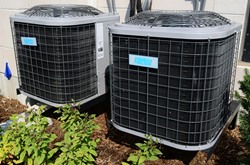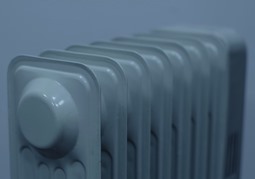How to Enroll In the Right Heating and Cooling Degree Program near Miller South Dakota
 Once you have decided on a career as a heating and air conditioning professional, the next action is to find an HVAC vocational school near Miller SD. But with so many to select from, how do you decide on the right one to obtain the training that you require? Some future students will make their selection based solely on the cost of tuition or how near the school is to their residence. While these are relevant concerns, they are not the only ones to take into account. A few of the other factors that you need to research are the graduation completion rates of the HVAC schools, their reputations, and if they are accredited by professional trade organizations. These and other criteria will be covered in more detail later within this article. But before we discuss how to pick an HVAC vocational school, let’s take a look at what a heating and air conditioning technician does to become a licensed skilled tradesman.
Once you have decided on a career as a heating and air conditioning professional, the next action is to find an HVAC vocational school near Miller SD. But with so many to select from, how do you decide on the right one to obtain the training that you require? Some future students will make their selection based solely on the cost of tuition or how near the school is to their residence. While these are relevant concerns, they are not the only ones to take into account. A few of the other factors that you need to research are the graduation completion rates of the HVAC schools, their reputations, and if they are accredited by professional trade organizations. These and other criteria will be covered in more detail later within this article. But before we discuss how to pick an HVAC vocational school, let’s take a look at what a heating and air conditioning technician does to become a licensed skilled tradesman.
How to Become an HVAC Contractor
 HVAC is an acronym that is frequently used in the trade that stands for “Heating, Ventilation and Air Conditioning”. HVAC professionals provide services for the installation, repair and maintenance of air conditioners, furnaces, boilers, water heaters and heating systems. As skilled tradesmen, they are generally required to be licensed, however every state and regional municipality has its own criteria. Attaining professional certification is not compulsory, but an optional means for Miller SD HVAC technicians to demonstrate that they are highly proficient and knowledgeable in their area of expertise. There are multiple respected certifications within the trade that are available. Below are some of the significant ones.
HVAC is an acronym that is frequently used in the trade that stands for “Heating, Ventilation and Air Conditioning”. HVAC professionals provide services for the installation, repair and maintenance of air conditioners, furnaces, boilers, water heaters and heating systems. As skilled tradesmen, they are generally required to be licensed, however every state and regional municipality has its own criteria. Attaining professional certification is not compulsory, but an optional means for Miller SD HVAC technicians to demonstrate that they are highly proficient and knowledgeable in their area of expertise. There are multiple respected certifications within the trade that are available. Below are some of the significant ones.
- North American Technician Excellence (NATE). NATE is a nationally acknowledged certification for HVAC techs. The certification is achieved by passing a proficiency examination and may be acquired in one or more specialties.
- HVAC Excellence. This certification makes available both a professional and a master specialist credential. 2 years of field experience in addition to passing a comprehensive exam are required for the professional level certification. Master specialists need to have 3 years of experience along with a passing score on the professional level exam. Similar to NATE, certifications are offered in multiple specialties.
- EPA Section 608. This certification is mandatory for specialists that handle refrigerants. There are three types of certification obtainable, one for small appliances, and the additional two for low and high pressure refrigerants.
Since licensing might be mandated in your area, and you may also intend to earn certification, it’s imperative that you enroll in an HVAC trade school that will prepare you for both. And since you will most likely be handling refrigerants, make sure that the program you pick readies you for passing the EPA Section 608 exams.
HVAC Degree Schools
 There are a variety of alternatives offered for HVAC instruction in a vocational or trade school. You can earn a certificate, an Associate Degree, or a Bachelor’s Degree. Obtaining a certificate will take the lesser amount of time, often completed in as little as 6 months, though some programs are longer. A certificate will train you for the majority of HVAC positions, particularly if you are licensed and have certification appropriate to the position. The degree programs may provide a competitive advantage in the job market and will deliver more comprehensive training than the certificate programs. Below is a brief description of each option offered near Miller SD.
There are a variety of alternatives offered for HVAC instruction in a vocational or trade school. You can earn a certificate, an Associate Degree, or a Bachelor’s Degree. Obtaining a certificate will take the lesser amount of time, often completed in as little as 6 months, though some programs are longer. A certificate will train you for the majority of HVAC positions, particularly if you are licensed and have certification appropriate to the position. The degree programs may provide a competitive advantage in the job market and will deliver more comprehensive training than the certificate programs. Below is a brief description of each option offered near Miller SD.
- Certificate. Generally requiring a high school diploma, certificate programs are very popular among beginning commercial or residential HVAC professionals. They furnish a solid foundation of skills for job opportunities within the trade.
- Associate Degree. The Associate Degree in HVAC program supplies a more exhaustive background of heating and a/c systems than the certificate program. Usually taking 2 years to finish, many degrees include an internship or work-study program.
- Bachelor’s Degree. The Bachelor’s Degree in HVAC is suited more towards a career in management as well as business ownership. Some programs require an Associate Degree, while others are a traditional four year program. In addition to mastering how to service and maintain heating and cooling systems, you will also learn how to design them.
Choosing the appropriate credential program will be based on what your future career goals are, in addition to the time and money that you have to invest. One option is to begin with a certificate or even an Associate Degree program, and after acquiring some experience in the trade in Miller SD, later going back to acquire a Bachelor’s Degree. If this is your strategy, be sure to ask the HVAC tech school you are looking at about how their returning student program works.
HVAC Online Classes
 Enrolling in an HVAC program online is one possibility to obtaining your training and receiving a certificate or degree. Nearly all schools will require some attendance on campus to complete practical training. Many also offer internship or work-study programs in addition to or instead of practical lab work. But since the balance of the classes can be attended online, this alternative may be a more accessible solution for many Miller SD students that are pressed for time. And some online degree programs are cheaper than other traditional alternatives. Even driving expenses from Miller and study materials can be lessened, helping to make schooling more affordable. And numerous online programs are fully accredited (more on this later). So if your career or family obligations have left you with limited time to attend classes, perhaps an HVAC online training program will make it easier to fit school into your active lifestyle.
Enrolling in an HVAC program online is one possibility to obtaining your training and receiving a certificate or degree. Nearly all schools will require some attendance on campus to complete practical training. Many also offer internship or work-study programs in addition to or instead of practical lab work. But since the balance of the classes can be attended online, this alternative may be a more accessible solution for many Miller SD students that are pressed for time. And some online degree programs are cheaper than other traditional alternatives. Even driving expenses from Miller and study materials can be lessened, helping to make schooling more affordable. And numerous online programs are fully accredited (more on this later). So if your career or family obligations have left you with limited time to attend classes, perhaps an HVAC online training program will make it easier to fit school into your active lifestyle.
What to Ask HVAC Certification Classes
 Once you have decided on the type of certificate or degree that you wish to earn, either on campus or online, you can start to limit your list of schools. As you are no doubt aware, there are numerous HVAC technical schools in the Miller SD area and throughout the USA to choose from. That’s why it is essential to have a list of key qualifiers when making school evaluations. As earlier mentioned in our opening paragraph, tuition and location will probably be the first 2 variables you will take into consideration. Following are some additional ones that you should explore before enrolling in your school of choice.
Once you have decided on the type of certificate or degree that you wish to earn, either on campus or online, you can start to limit your list of schools. As you are no doubt aware, there are numerous HVAC technical schools in the Miller SD area and throughout the USA to choose from. That’s why it is essential to have a list of key qualifiers when making school evaluations. As earlier mentioned in our opening paragraph, tuition and location will probably be the first 2 variables you will take into consideration. Following are some additional ones that you should explore before enrolling in your school of choice.
Accreditation. Numerous HVAC vocational schools in the Miller SD area have acquired either a regional or a national accreditation. They can acquire Institutional Accreditation, which focuses on the school’s programs overall, or Programmatic Accreditation, which pertains to an individual program, for example HVAC technology. Verify that the school and program are accredited by a U.S. Department of Education recognized accrediting agency, for example the Accreditation Board for Engineering and Technology. Along with helping make certain that you get an excellent education, it may help in securing financial assistance or student loans, which are frequently unavailable for non-accredited programs. Additionally, some states require that the HVAC training program be accredited for it to qualify for licensing.
High Completion Rates. Ask the Heating and Air Conditioning schools you are considering what their completion rates are. The completion rate is the percentage or portion of students who enroll in and finish the course. A low completion rate might suggest that students were unhappy with the program and quit. It might also signify that the instructors were not qualified to instruct the students. It’s similarly essential that the schools have higher job placement rates. Older and/or more reputable schools may have a more extensive directory of graduates, which may mean more contacts for the school to utilize for their apprenticeship and job placement programs. A high job placement rate can not only validate that the school has an excellent reputation within the field, but additionally that it has the network of Miller SD HVAC employers to help students obtain apprenticeships or jobs.
Apprenticeship Programs. A large number of HVAC training programs are taught together with an apprenticeship or an internship program. Those participating trade and vocational programs will help place you in an apprenticeship program inside their network of HVAC businesses or labor unions. Find out if the schools you are comparing have working partnerships with local Miller SD HVAC professionals. An apprenticeship not only provides a rewarding experience by supplying practical training, but it also furnishes job opportunities and helps to establish relationships in the regional HVAC professional community.
Modern Facilities. Confirm that the campus facilities and the tools that you will be trained on are state-of-the-art and what you will be using on the job. If you are currently in an internship or an apprenticeship, check with the HVAC tech you are working with regarding what you should be looking for. Otherwise, ask a local Miller SD HVAC contractor if they can provide some suggestions. Also bear in mind that unless you are willing to relocate, the school needs to be within commuting distance of your Miller SD home. Remember that if you decide to attend an out-of-state school, besides the added relocation costs there might be higher tuition charges compared to in-state residents.
Smaller Classes. It’s important that you receive as much one-on-one training as possible, which can be difficult in bigger classes. Ask if you can monitor a couple of the classes so that you can observe how big they are and witness first hand the interaction between teachers and students. Talk to several of the students and get their comments relating to class sizes and instruction. Last, talk to some of the teachers and learn what their level of expertise is and what degrees or certifications they hold.
Flexible Scheduling. Make sure that the class schedules for the schools you are reviewing are flexible enough to handle your needs. If you are only able to go to classes at night or on weekends near Miller SD, verify that the programs you are reviewing offer those choices. If you can only attend on a part-time basis, make certain that the school you select permits part-time enrollment. Also, ask what the policy is to make-up classes should you miss any due to work, illness or family responsibilities.
Considering an HVAC School near Miller SD?
Perhaps you are considering enrolling in an HVAC training program in the Miller South Dakota area. If so, you may find the following background information about the location of your new school campus both interesting and informative.
Miller, South Dakota
As of the census[3] of 2010, there were 1,489 people, 724 households, and 396 families residing in the city. The population density was 1,519.4 inhabitants per square mile (586.6/km2). There were 839 housing units at an average density of 856.1 per square mile (330.5/km2). The racial makeup of the city was 97.8% White, 0.2% African American, 0.5% Native American, 0.1% Asian, 0.3% from other races, and 1.1% from two or more races. Hispanic or Latino of any race were 0.6% of the population.
There were 724 households of which 20.3% had children under the age of 18 living with them, 46.1% were married couples living together, 7.5% had a female householder with no husband present, 1.1% had a male householder with no wife present, and 45.3% were non-families. 43.2% of all households were made up of individuals and 25.4% had someone living alone who was 65 years of age or older. The average household size was 1.97 and the average family size was 2.70.
The median age in the city was 51.2 years. 18.9% of residents were under the age of 18; 4.6% were between the ages of 18 and 24; 17.8% were from 25 to 44; 25.5% were from 45 to 64; and 33.2% were 65 years of age or older. The gender makeup of the city was 45.9% male and 54.1% female.
Heating and Air Classes Miller SD
Picking the right HVAC school course is a critical first step toward a gratifying career in the heating & cooling industry. You originally came to this website because you wanted more information regarding Heating and Air Classes. However, as we have addressed in this article, you need to pick an HVAC technical school and a certificate or degree program that are both accredited and have outstanding reputations within the HVAC profession. Other features to search for are ample practical training and state-of-the-art facilities. You need to go to each of the schools personally that you are most interested in to inspect the campus and talk with both the faculty and current students. Try to get a feel for the quality of the instruction and the interaction between them. Also, inquire about scheduling options and if evening or weekend classes are available if needed. And remember to ask about financial assistance and student loan options also. If you ask the right questions as we have detailed in our guidelines for assessing schools, you’ll be able to narrow down your options so that you can make an informed decision. With the proper training, hard work and commitment, you can ultimately become a licensed HVAC technician in Miller SD.
More Hot and Cool Locations in South Dakota
